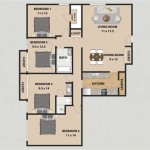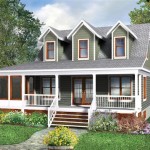Coastal House Plans With Elevators: Navigating Accessibility and Luxury
Coastal house plans evoke images of breezy balconies, panoramic ocean views, and a relaxed lifestyle. However, the multi-story nature often associated with maximizing these views can present accessibility challenges. Incorporating an elevator into coastal house plans addresses these challenges, providing a practical solution for homeowners of all ages and abilities, while simultaneously adding a touch of luxury and future-proofing the property.
The integration of an elevator into a coastal home design requires careful planning and consideration. It is not merely an afterthought to be squeezed into an existing layout, but rather a strategic element that influences the overall design aesthetic and functionality. Factors such as the elevator's size, location, style, and compliance with local building codes must be meticulously addressed to ensure a seamless and aesthetically pleasing integration.
Coastal environments present unique considerations for elevator installations. The corrosive effects of saltwater and humidity can significantly impact the lifespan and performance of elevator components. Therefore, selecting materials and finishes specifically designed to withstand these harsh conditions is paramount. Furthermore, the potential for storm surges and flooding must be factored into the elevator's design and installation to prevent damage and ensure safety.
Beyond accessibility, an elevator can greatly enhance the convenience and value of a coastal home. It simplifies tasks such as carrying groceries, luggage, or furniture between floors. It also provides a selling point for potential buyers who may be seeking a home that accommodates aging in place or individuals with mobility limitations. Ultimately, incorporating an elevator is an investment in the long-term usability and marketability of the property.
Key Benefits of Incorporating Elevators in Coastal Homes
There are a number of compelling reasons to consider adding an elevator to your coastal home design. These reasons extend beyond simply addressing accessibility concerns and provide tangible benefits for all homeowners.
Enhanced Accessibility and Aging in Place: This is perhaps the most significant benefit. An elevator eliminates the need to navigate stairs, making the home accessible to individuals with mobility limitations, including the elderly, those with disabilities, or those recovering from injuries. This allows homeowners to remain in their beloved coastal home as they age, maintaining their independence and quality of life. It also increases the home's appeal to a wider range of potential buyers in the future.
Increased Convenience and Comfort: Even for individuals without mobility challenges, an elevator offers unparalleled convenience. Transporting heavy items like groceries, luggage, furniture, or even laundry between floors becomes effortless. This is particularly beneficial in multi-story coastal homes where living spaces are spread across multiple levels. The added comfort and ease of movement contribute to a more relaxed and enjoyable coastal living experience.
Elevated Property Value and Marketability: The inclusion of an elevator can significantly increase a coastal home's value and market appeal. It distinguishes the property from others in the market, making it more attractive to buyers seeking accessibility features or those planning for future needs. An elevator is viewed as a luxury amenity that enhances the overall desirability and perceived value of the home. This can translate to a higher selling price and a faster sale when the time comes to put the property on the market.
Design Considerations for Elevators in Coastal Homes
Integrating an elevator into a coastal house plan requires careful consideration of various design elements to ensure seamless integration and optimal functionality. The elevator should complement the overall architectural style of the home and enhance its aesthetic appeal. This process involves considering the size, location, style, and materials used in the elevator's design.
Placement and Space Requirements: The location of the elevator is crucial. It should be easily accessible from all floors and ideally situated near the main living areas. Adequate space must be allocated for the elevator shaft and machinery room. The size of the elevator cab should be sufficient to accommodate wheelchairs, walkers, or multiple passengers comfortably. Consider the traffic flow within the home and position the elevator to minimize disruption and maximize convenience. Many residential elevators require a footprint of approximately 5 feet by 5 feet, but this can vary based on the specific model and features.
Architectural Style and Aesthetics: The elevator should be designed to complement the architectural style of the coastal home. Options include traditional elevators with wood paneling and ornate detailing, contemporary elevators with sleek glass and stainless steel finishes, and even custom-designed elevators that reflect the homeowner's personal taste. The key is to choose an elevator that seamlessly blends into the existing design and enhances the overall aesthetic appeal of the home. Consider the use of natural light, mirrors, and decorative lighting to create a welcoming and visually appealing elevator cab.
Material Selection and Durability: Coastal environments are notoriously harsh on building materials. Saltwater, humidity, and strong winds can accelerate corrosion and deterioration. Therefore, selecting durable and weather-resistant materials is essential for elevators in coastal homes. Stainless steel, aluminum, and fiberglass are excellent choices for exterior components, as they are highly resistant to corrosion. Interior finishes should also be durable and easy to clean, such as solid-surface countertops, waterproof flooring, and mildew-resistant wall coverings.
Addressing Coastal Environmental Factors in Elevator Design
The coastal environment poses specific challenges to elevator installations that must be addressed during the design and construction phases. Ignoring these factors can lead to premature wear and tear, malfunctions, and costly repairs. Proper planning and mitigation strategies are essential to ensure the longevity and reliability of the elevator system.
Saltwater Corrosion Protection: Saltwater is highly corrosive and can quickly damage elevator components if not properly protected. Use of marine-grade stainless steel, aluminum, and other corrosion-resistant materials is crucial for all exposed parts, including the elevator car, doors, rails, and machinery. Protective coatings and sealants should be applied to all metal surfaces to prevent saltwater from penetrating and causing corrosion. Regular maintenance, including washing down the elevator with fresh water, is also essential to remove salt buildup.
Humidity Control: High humidity levels can lead to condensation, which can damage electrical components and promote mold growth. Installing a dehumidifier in the elevator shaft and machinery room can help to control humidity levels and prevent moisture-related problems. Ensure that all electrical components are properly sealed and protected from moisture. Regularly inspect the elevator for signs of condensation or mold growth and take corrective action as needed.
Flood Protection Measures: Coastal areas are susceptible to flooding, especially during storms and hurricanes. Elevators are particularly vulnerable to flood damage, which can render them inoperable and pose a safety hazard. Consider installing a submersible pump in the elevator pit to remove water in the event of a flood. Elevate the elevator machinery room above the anticipated flood level. Install flood barriers around the elevator entrance to prevent water from entering the shaft. Ensure that all electrical components are waterproof and properly grounded to prevent electrical shock.
In conclusion, coastal house plans with elevators offer a unique blend of accessibility, convenience, and luxury. By carefully considering the design elements, environmental factors, and building codes, homeowners can create a coastal living experience that is both enjoyable and sustainable for years to come. However, it is vital to consult with experienced architects, elevator contractors, and engineers to ensure a successful and safe installation. This collaboration will ensure that the elevator seamlessly integrates into the overall design and enhances the functionality and value of the coastal home.

Shelter Cottage Piling Foundation With Elevator 2466 Sf Southern Cottages

Coastal Stilt House Plan With Elevator And Second Level Living Space 765044twn Architectural Designs Plans

House Plans Floor With Elevator For Builders

Two Story 4 Bedroom Southern Home With Elevator And Second Floor Balconies Plan Balcony House Plans Florida

Elevated Piling And Stilt House Plans Coastal From Home

Floor Plans House With Elevators

Coastal House Plans Beach From Sdc

Plan 44164td Elevated Cottage House With Elevator Coastal Plans Beach Beautiful Houses

Coastal House Plans Beach From Sdc

Elevated Piling And Stilt House Plans Coastal From Home








